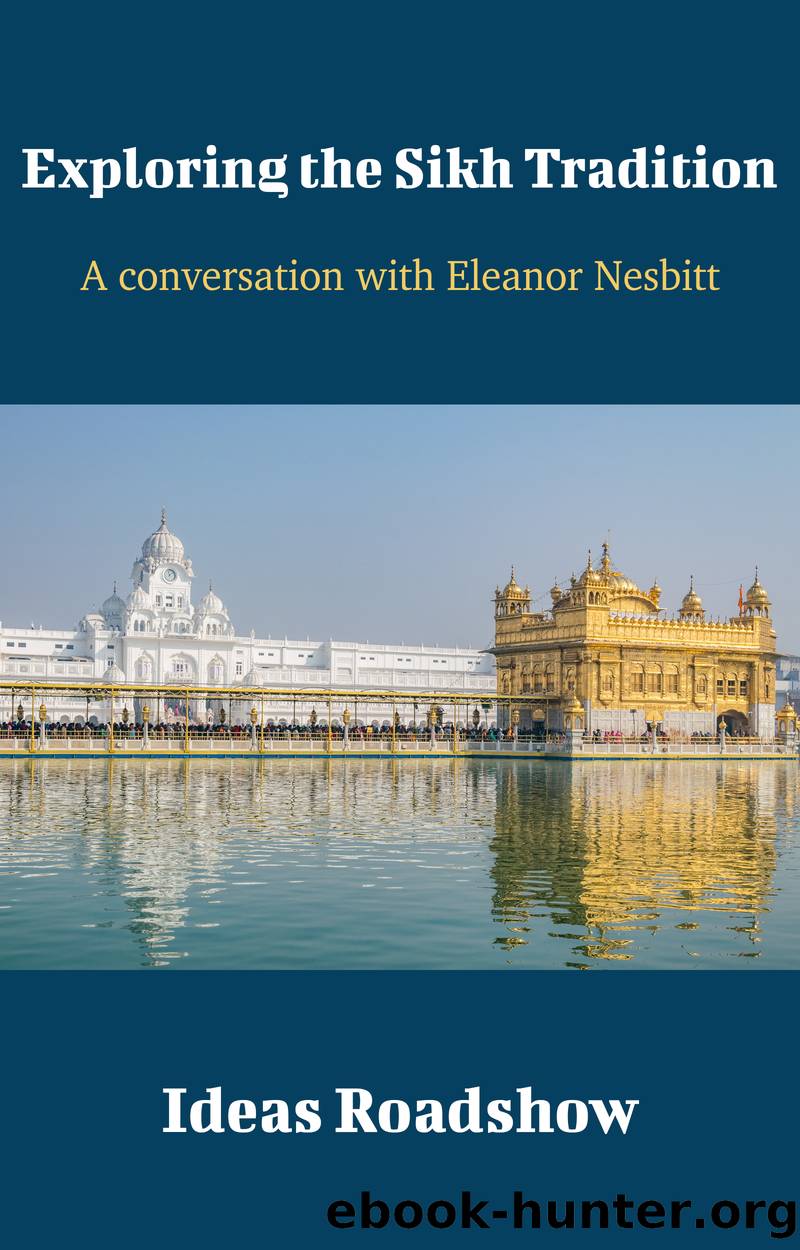Exploring the Sikh Tradition by Howard Burton

Author:Howard Burton
Language: eng
Format: epub
Tags: Religious Studies, Anthropology, Education
Publisher: Open Agenda Publishing
Published: 2021-05-02T00:00:00+00:00
Questions for Discussion:
To what extent are our current names of other people and cultures a reflection of our own cultural and historical biases?
What impact, if any, do you think modern technology will have on the way Sikhs approach the Guru Granth Sahib?
III. Identity
Turbans, Five Ks and evolving perspectives
HB: For most people who donât know very much about the Sikh tradition, one thing they might be familiar with is the turban or the sword, and they might well be wondering how those attributes fit into this picture that youâve just been describing.
EN: Yes, many people recognize Sikhs primarily by the turban. The turban is a headdress, a head covering, which is actually much more widely worn than by Sikhsâand Iâm not just talking about India.
But when Guru Gobind Singh required that one of the five outward signs of initiated Sikhs would be uncut hair, it was natural that men, at least, would cover their uncut hair with a turban.
Sikhs often talk about the turban as their âcrownâ, and the attachment to it is a profoundly emotional one. So that if, for instance, letâs say in a school playground, somebody messes with a Sikh ladâs turban, that isnât like just knocking somebodyâs hat off. Itâs felt much more keenly as an insult to the community and to the faith.
The turban itself has quite a history. Very many Sikh men who are not initiated in the Amrit Ceremonyâthe ceremony involving blessed, sweetened water in a particular ritualânonetheless wear the turban as a way of identifying with their community. The wearing of it doesnât mean that they are observing the full discipline.
And something which has happened increasingly towards the end of the 20th century and into the 21st century, certainly in the UK, is that women who have taken the step of being initiated into the Khalsa, into the committed community of Sikhs, are also adopting the turban.
And they will explain this in a number of different ways.
One is that the emphasis of the Sikh tradition is on equality and that includes gender equality. So if Sikh men are required to wear the turban, then obviously Sikh women should also wear it.
Another thing is that history itself is to some extent being revisited, and I would say reinvented. And with the help of the internet, thereâs more and more portrayal of historic Sikh women as turban-wearing, when there is actually no historical evidence that they did. But people increasingly feel sentiments like, Iâm doing what my Sikh foremothers did: they went to battle wearing a turban.
One can also look at it in a more sociological way and say, âAs Muslim women in countries like the UK are increasingly deliberately adopting a conspicuously Islamic form of dress which their mothers and grandmothers may not have worn, similarly, young Sikh women who have a similarly strong identification with their faith, feel it appropriate to be wearing the turban.â
I remember perhaps 20 or 30 years ago, writing about women wearing the turban, and one of my colleagues in religious education saying, âNo, they donât.
Download
This site does not store any files on its server. We only index and link to content provided by other sites. Please contact the content providers to delete copyright contents if any and email us, we'll remove relevant links or contents immediately.
| Confucianism | Feng Shui |
| I Ching | Jainism |
| Karma | Shintoism |
| Sikhism | Tao Te Ching |
| Taoism | Tibetan Book of the Dead |
| Zoroastrianism |
The Tao of Physics by Fritjof Capra(2231)
Human Design by Chetan Parkyn(2033)
The Diamond Cutter by Geshe Michael Roach(2022)
Feng Shui by Stephen Skinner(1904)
The Alchemy of Sexual Energy by Mantak Chia(1818)
Tao Te Ching by Lao Tzu(1806)
365 Tao: Daily Meditations by Ming-Dao Deng(1590)
Tao Tantric Arts for Women by Minke de Vos(1549)
Sun Tzu's The Art of War by Giles Lionel Minford John Tzu Sun(1508)
Sidney Sheldon (1982) Master Of The Game by Sidney Sheldon(1475)
Buddhism 101 by Arnie Kozak(1473)
Karma-Yoga and Bhakti-Yoga by Swami Vivekananda(1470)
The Analects of Confucius by Burton Watson(1396)
The Art of War Other Classics of Eastern Philosophy by Sun Tzu Lao-Tzu Confucius Mencius(1378)
Tao te ching by Lao Tzu(1333)
The Way of Chuang Tzu by Thomas Merton(1328)
The New Bohemians Handbook by Justina Blakeney(1322)
The Sayings Of by Confucius(1283)
Bless This House by Donna Henes(1237)
